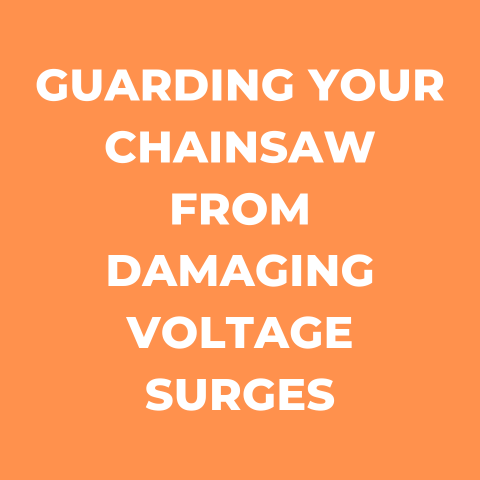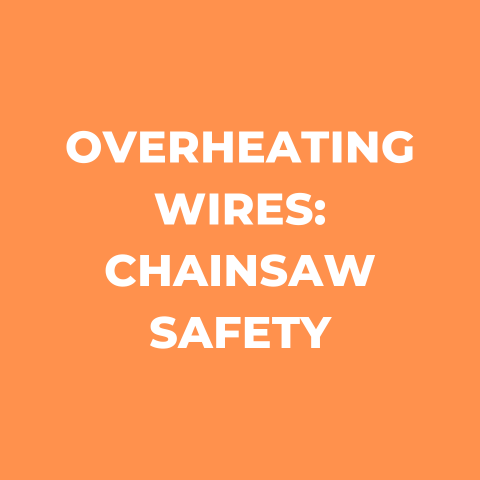Power Loss Mid-Job: Chainsaw Hacks (Explained)
Operating a chainsaw can be dangerous work. Having your saw suddenly lose power while mid-cut creates an extremely hazardous situation. In this comprehensive troubleshooting guide, we provide solutions to the most common causes of abrupt power loss in chainsaws to help get you back up and running safely.
Why Does My Chainsaw Lose Power?
There are several potential culprits when a saw starts but then dies shortly after. Here are some of the most likely causes of sudden power loss:
- Faulty spark plug
- Blocked fuel line or filter
- Faulty carburetor
- Obstructed air filter
- Low chain oil
- Electrical issue
- Engine flooding
Properly diagnosing the specific cause is crucial for a quick fix. So let’s explore each issue more in-depth, along with actionable solutions.
Step-by-Step Troubleshooting Solutions
Follow these detailed troubleshooting steps to efficiently pinpoint and resolve what’s causing your chainsaw to sputter out mid-job:
1. Check Spark Plug
A worn or faulty spark plug is one of the most common reasons a chainsaw starts then loses power.
To check:
- Remove the spark plug cap and use a spark plug wrench to take out the plug.
- Examine the spark plug for signs of wear. Look for excessive carbon buildup, worn electrodes, cracks, or oil fouling.
- Use a spark plug gap tool to check that the gap between electrodes is 0.020-0.030 inches. Adjust if necessary.
- Test the plug by reconnecting it to the cap and grounding it to the engine. Pull the starter cord and watch for a blue spark. No spark indicates a bad plug.
Replace the spark plug if it’s excessively worn or doesn’t produce an adequate spark. Use the recommended plug type specified in your chainsaw’s owner’s manual.
2. Check Fuel Line and Filter
A blocked fuel line or filter cuts off the engine’s fuel supply, causing power loss.
To troubleshoot:
- Locate the fuel line connecting the tank to the carburetor. Detach it from the carburetor end and blow through it to check for blockages.
- Examine the in-tank fuel filter (if equipped). Remove it and inspect for dirt buildup or cracks.
- Clear out any debris blocking the line/filter. Replace damaged parts.
- Reattach fuel line and filter. Test chainsaw to see if power restores.
3. Clean or Rebuild Carburetor
The carburetor regulates the engine’s air-fuel mixture. A malfunctioning carb can cause power loss issues.
To troubleshoot the carburetor:
- Remove air filter and housing to access the carburetor.
- Take out carburetor following manufacturer instructions. Disassemble and clean thoroughly with carburetor cleaner.
- Inspect carb parts closely – jets, gaskets, floats, needles. Replace any worn or damaged components.
- Reassemble carb and reinstall on saw. Adjust settings per manual.
This often resolves carb-related power loss. For persistent issues, a full carburetor rebuild kit may be required.
4. Check and Replace Air Filter
A dirty, clogged air filter chokes the engine’s air supply, resulting in loss of power.
To check:
- Remove air filter cover and take out filter. Tap gently against a hard surface to dislodge debris.
- Hold filter up to light – if you can’t see light, the filter is still clogged. Try cleaning it with soap and water if reusable.
- Replace disposable foam filters at least every 25 hours of use. Use manufacturer part number specified for your model.
5. Refill Chain Oil Tank
Insufficient lubrication from low chain oil also causes chainsaws to lose power.
- Check window on tank to see oil level. Refill tank if low.
- Use bar oil designed specifically for chainsaws. Regular motor oil can damage bars/chains.
- Make sure oil delivery holes are clear of sawdust. Poke with wire if obstructed.
6. Check Wiring and Connections
Faulty ignition wiring can cause power loss.
Inspect wiring for:
- Loose, disconnected, or damaged wires
- Corroded or loose spark plug cap
- Cracked or worn insulation
Fix loose connections. Replace damaged wires and caps. Still no spark? The ignition module might need replacement.
7. Clean Engine If Flooded
Sometimes excessive fuel in the cylinder causes flood conditions, preventing starting.
- Remove spark plug and turn saw so plug hole faces ground. Pull starter cord several times to clear excess fuel.
- Allow plug to dry completely before reinstalling. Be very careful not to overtighten when re-threading.
- Let saw fully dry out before restarting. Should start normally. If not, further diagnosis needed.
Preventive Measures
While it’s impossible to avoid all chainsaw issues, here are some pro tips to help prevent abrupt power loss:
- Maintain air filter – replace regularly and check before each use.
- Use quality fuel and store properly in vented container. Stale fuel causes buildup.
- Clean saw after each use to remove sawdust, sap, and debris.
- Keep chain lubricated. Check tank and oil holes before starting work.
- Inspect spark plug and replace after 100 hours of runtime. Gap yearly.
- Clean carburetor passages, jets, and filters at least annually.
- Check fuel lines and filter each season for cracks or blockages.
- Inspect ignition wiring and connections for damage. Repair issues immediately.
- Follow saw’s maintenance schedule and manual for tune-ups and part replacement.
When to Call a Professional
While many power loss issues can be fixed with routine DIY maintenance, it’s smart to call a professional if:
- Diagnosis requires specialized tools like compression gauges or tachometers
- The crankcase needs to be split for internal repairs
- Major components like the ignition module or fuel pump need replacement
- There are puzzling electrical issues despite wire/connection checks
- You lack the expertise or manual required for your particular model
Professional chainsaw mechanics have specialized training, tools, and experience to efficiently diagnose and repair perplexing issues. For major repairs, the cost of professional service is well worth it to ensure long-term operation and safety.
Key Takeaways
Losing power mid-cut is very dangerous, but there are definable reasons saws quit unexpectedly. Follow the organized troubleshooting steps outlined here to identify and resolve the most common culprits. Reference your owner’s manual for model-specific procedures.
Implementing preventive maintenance like regular filter changes, wire inspections, and fuel line cleaning can help avoid abrupt power loss in the first place. But even well-maintained saws can eventually develop issues.
Know when DIY repairs are advisable for your skill level versus calling in a professional. Proper diagnosis and repair means you can get back to work quickly and safely.







